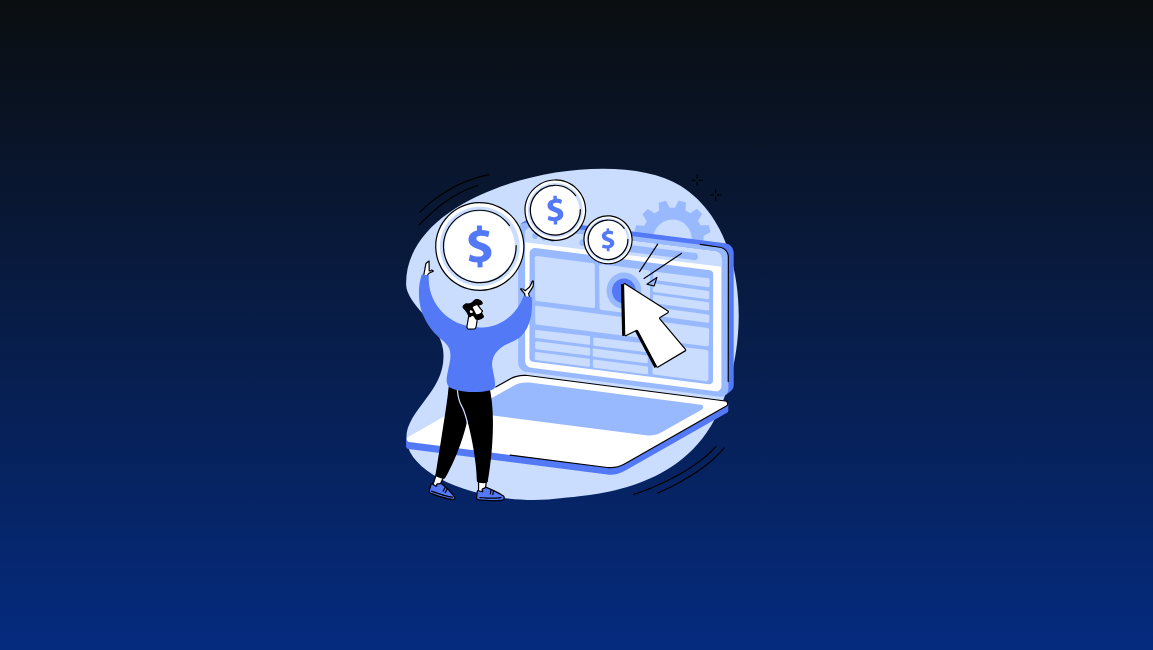Growing an ecommerce business is challenging. You need to get everything right — from store design and product images to marketing and fulfillment.
There are two ways to get everything right:
- You can spend your time and money to A/B test your way to success.
- OR, you don’t reinvent the wheel and instead learn from examples of stores that are already crushing it.
Which one’s your choice? Our guess: You’ll read articles like this one, learn whatever you can from the ecommerce businesses that have made it, and start from there. If that’s the correct guess, you will love the ecommerce store examples in this article.
But before getting to the “ecommerce business examples,” let’s take a step back and define ecommerce and the different types of ecommerce business.
What Is eCommerce?
eCommerce (or electronic commerce) refers to the buying and selling of goods and services over the internet.
You can divide ecommerce businesses into four types:
- Business-to-Consumer (B2C)
- Business-to-Business (B2B)
- Consumer-to-Consumer (C2C)
- Consumer-to-Business (C2B)
Each term is self-explanatory, but let’s expand upon it a bit with some examples. If you already know, skip to the ecommerce examples section.
Types Of eCommerce Businesses
1. Business-to-Consumer
When most people say “ecommerce businesses,” they refer to “Business-to-Consumer companies that sell online.” In the B2C model, a business sells products or services to end consumers. For example, Amazon is a B2C ecommerce company.
Note: If the B2C business manufactures the product and sells it directly to the consumer, it’s called a D2C or Direct-to-Consumer ecommerce business model. Most ecommerce business examples you’ll see below will be of D2C brands.
2. Business-to-Business
In the B2B model, the transaction happens between two businesses. For example, if a B2C business buys something from a manufacturer or supplier, the transaction between the two parties is B2B ecommerce.
3. Consumer-to-Consumer
When a consumer (i.e., not a registered business) sells goods or services to another consumer with the help of the internet, it’s called C2C ecommerce. For example, people sell things on the Facebook Marketplace or eBay, and other people buy them — that’s C2C.
4. Consumer-to-Business
The C2B ecommerce model refers to when a consumer provides a product or service to a business via the internet. Any referral program example is an example of the C2B ecommerce model because a consumer is providing a service to the business (by writing reviews, bringing traffic, bringing sales, etc.), and in return, the business is paying for the service with the commission.
The 10 eCommerce Business Examples To Learn From:
1. Bonobos

Men’s pants. Bonobos — one of the leading men’s clothing e-stores & that Walmart acquired for a whopping $310 million in 2017 — started by selling men’s pants.
Let me rephrase: In 2007, Brian Spaly and Andy Dunn launched Bonobos with one product: better-looking, better-fitting men’s pants. And consumers loved it!
In his Medium article, Andy Dunn states, “Consumers don’t need many things from your company —they just need one thing from your company. You may want them to need everything from your company but guess what: consumers don’t care what you want. Your job is to care about what they want, not what you want them to want.”
That’s what you can take away from the Bonobos example.
Key Takeaway
- Focus on one thing initially.
2. Dollar Shave Club

Founded in 2011 by Michael Dubin and Mark Levine, Dollar Shave Club is one of the most successful subscription ecommerce businesses. How successful? Well, Unilever paid $1 billion to acquire it, just after five years of the company launch!
What Dollar Shave Club sold wasn’t something unique, but the idea to send essential shaving equipment to the customer’s doorstep at a regular interval was. The convenience it sold combined with fun marketing like its first viral video, “Our Blades Are F***ing Great,” made Dollar Shave Club successful in record time.
Key Takeaway
- You don’t necessarily need to undercut your competitors to win customers. People buy for many reasons: In Dollar Shave club’s case, the reason was/is convenience.
3. Leesa

Leesa sells mattresses online — mattresses that helped Leesa founders sleep better. Their first successful product was a “Universal Adaptive Feel” mattress that adjusted to bodies of all sizes and shapes.
They are so confident in their product that they offer a 100-night free trial to mattress buyers. That confidence also reflects in their marketing strategy:
Instead of spending marketing budget on ads, they rely on word of mouth. They have set an affiliate marketing program that incentivizes customers that bring more customers, which has led to a snowball effect.
Key Takeaway:
- Make your products so good that you consumers bring more consumers.
Pro Tip: You can set up a Shopify affiliate app with Social Snowball to amplify word of mouth.
4. Warby Parker

Warby Parker is an online retailer of prescription glasses that started because of one question: Why are glasses so expensive?
Dave Gilboa, one of the four founders of 2010-started Warby Parker, describes the eureka moment of finding the answer to the question: “Understanding that the same company owned LensCrafters and Pearle Vision, Ray-Ban and Oakley, and the licenses for Chanel and Prada prescription frames and sunglasses — all of a sudden, it made sense to me why glasses were so expensive.”
Hence started a fashionable and low-cost online glasses retailer, Warby Parker. Combined with unconventional marketing strategies (that included telling resonating stories & publishing fun content) and memorable customer experience, Warby Parker disrupted a monopolized space in style.
Key Takeaways
- Understand your USP (unique selling proposition).
- People resonate with stories. Incorporate them into your marketing mix.
5. ModCloth

Born in Susan Gregg Koger’s dorm room, Modcloth is a Women’s clothing brand that focuses on authenticity and stories.
- They interact with fans on social media and take requests.
- Their customers can sign up to model for product landing pages. All photos on the site are authentic — there’s no airbrushing to fit the traditional “beauty” mold.
- With its Be The Buyer campaign, ModCloth even allowed customers to vote on potential clothing designs.
- Anyone can chat with ModStylists for personal styling and product questions.
- Their blog is filled with behind-the-design stories.
All of it has made ModCloth an ever-growing strong community of loyal customers.
Key Takeaways
- Ask them what they need and have a 100% chance at succeeding with each launch.
6. ASOS

ASOS — short for AsSeenOnScreen — is a British fashion and cosmetic retailer. Their vision, as they describe, is “to be the world’s number one fashion destination for fashion-loving 20-somethings.”
Year after year, ASOS has grown bigger and bigger — for example, last year, ASOS generated £3.9bn (or over US$5 billion) in revenue, a 22% increase from 2020. And there have been a few constant contributors to their success:
- Customer-first policies: Everything at ASOS revolves around making the customer experience better. For example, ASOS frequently surveys its customers to improve their shopping experience.
- Inclusion: ASOS’s values revolve around being authentic, brave, and creative. It has choices for everyone, with ASOS brands available in more than 30 sizes and gender-neutral styles. Moreover, ASOS invites anyone interested to apply to be a model.
- Content marketing: ASOS does a lot on the content side to inspire their customers and increase brand awareness and brand loyalty. For example, their frequently-updated fashion feed includes a lot of styling tips, listicles, UGC from social media, etc.
Key Takeaway
- Define your core audience, and do everything to serve them
7. BirchBox

The BirchBox example is similar to the Dollar Shave Club one — in that BirchBox, too, is a subscription-based ecommerce business example. BirchBox sends a sample of four or five beauty products across makeup, skincare, haircare, and fragrance categories every month to the subscribers.
When it started, the BirchBox motto was simple: “to make the world of beauty and grooming simple.” The idea was first of its kind — and a brilliant one — when BirchBox launched. Therefore, it immediately gained word-of-mouth after its first few customers. In fact, Birchbox had 600 paying customers even before its launch. And when they launched, people shared about it with friends; even vloggers made unboxing videos and likes and had positive things to say. All of it led to this day — where Birchbox is a success story enough to be featured in our successful ecommerce business examples list 😉
Key Takeaways
- An exciting idea that serves customers’ needs or wants will gather word-of-mouth.
- Market your products beforehand and get people to pre-order.
8. Wine Library

Gary Vaynerchuk is a well-known personality in the marketing and business world. Today, he is the CEO of a 1000-people media agency, Vaynermedia, and a massive influencer with almost 10 million Instagram followers. His success story, though, started with Wine Library – one of the first ecommerce businesses in the wine space. He took his father’s brick-and-mortar liquor store online and grew it from $3 million per year to $60 million per year.
One of the primary contributors to the success of Wine Library was video marketing (and social media marketing in general). Gary started Wine Library TV — a wine-related YouTube show that went on to 1000 episodes — to build brand awareness. Moreover, he actively participated in social media discussions as a subject-matter expert in everything wine.
Key Takeaways
- Consistent, strategic content marketing can do wonders for your ecommerce business.
- Showcase yourself and/or your company as a subject-matter expert
9. Zappos

Zappos (previously Shoesite.com) started as an online shoe retailer in 1999. In 2010, Amazon bought it for $1.2 billion.
The fact that Amazon bought it in a 10-figure deal alone makes it a successful ecommerce business example worth mentioning. But we are listing it for the “learn from” part of the “ecommerce business examples to learn from.” And what can you learn from Zappos for your ecommerce business? The commitment to customer service.
Very early on, founder Nick Swinmurn and then-co-CEO Tony Hsieh defined the company’s core values. At the top of Zappos’s ten core values list was “Deliver WOW Through Service.” Since then, Zappos has become legendary for its quality customer service, and the service has been a primary reason behind its loyal customer base.
Key Takeaways
- Focus on customer service for building long-term customer relations.
- Establish core values that define your brand, and stick to them.
10. GymShark

Gymshark is a modern-day example of ecommerce businesses you can learn from. Started in 2012, Gymshark is a fitness apparel and accessories brand that primarily caters to 18-25-year-old fitness enthusiasts.
It is one of the early adopters of the influencer marketing model and has built a strong community of influencers and fans, which has helped Gymshark become a billion-dollar global brand.
The techniques around “Influencer marketing” and “online communities” are as modern as it gets in ecommerce. However, the first big success for Gymshark came from one of the traditional marketing methods: Showcasing at trade shows.
CEO Ben Francis almost emptied his bank to get space on the BodyPower trade show floor. There, he showcased their then-new product Luxe fitted tracksuit. When they came back from the trade show and put the showcased products online, the traffic went nuts, and Gymshark made $42,000 in a single day.
Key Takeaways
- Influencer marketing is one of the fastest ways to spread word-of-mouth
- Just because you are doing online commerce doesn’t mean you should skip offline marketing.
Wrap Up: The 10 eCommerce Business Examples For Inspiration
Learning from examples is an effective way to get forward faster. We hope you got some ideas to implement for your store from the ecommerce business examples mentioned above.
We update our articles from time to time. Hopefully, one day, we’ll click on the update button and you’ll revisit this article to see your brand in this list of giants. Good luck!
If your store already attracts a significant number of customers, one sure-shot way to grow it is with an affiliate program.
Start your 30-day free trial with Social Snowball – a Shopify Affiliate App!




